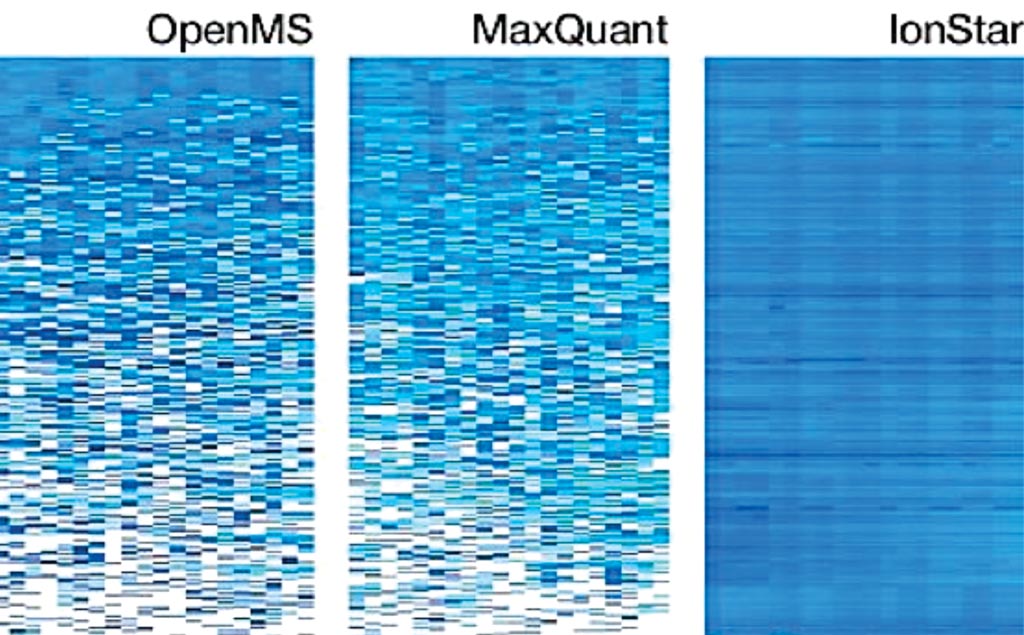New Protein Analysis Tool Improves Diagnostic Accuracy
By LabMedica International staff writers
Posted on 23 May 2018
The abundance of proteins in the body that correspond with disease or pharmaceutical reactions can provide physicians with vital clues for accurately diagnosing a condition, and for developing potential therapies and evaluating drug effects.Posted on 23 May 2018
Protein analysis tools are used to quantify and compare the abundance of proteins in groups of healthy individuals with those who are ill or treated with a drug. Changes in protein abundances, when analyzed together, often reveal novel biomarkers.

Image: Compared to OpenMS and industry standard MaxQuant, IonStar lowered the amount of missing data in test results from 17% to 0.1%. White area indicates missing data (Photo courtesy of Professor Jun Qu, PhD).
Scientists at the University at Buffalo (Buffalo, NY, USA) and their colleagues developed a new protein analysis tool that could vastly increase the speed and precision with which disease and drug effects are analyzed. The groundbreaking tool, called IonStar, is the first to provide near-perfect accuracy when quantifying and comparing the abundance of proteins in the bodies of people who are healthy and ill.
The team used IonStar to quantify proteins in rats with traumatic brain injury, a debilitating condition that accounts for 2.2 million emergency room visits annually in the USA. Using 100 tissue samples, IonStar identified 7,000 proteins, including 1,000 that differed in abundance, without missing data. The team has used IonStar and similar techniques to analyze protein variation in cancer, diabetes, cardiovascular disease, neurodegeneration and retina degeneration as well. IonStar increases accuracy and precision and lowers missing data by improving on sample preparation methods, alignment and feature detection designs for mass spectrometry analysis.
Several other unique features of IonStar are also included for removal of shared peptides, detection and rejection of outliers, and experimental estimate and control of false altered protein discovery rate (FADR). This well-optimized protocol enables global quantification of more than 5,000 proteins in ~50 replicated with high quantitative accuracy and precision, plus extremely low level of missing data. Additionally, extensive proteome coverage as well as much improved quantification of low-abundance proteins could be achieved.
Jun Qu, PhD, a professor in the UB School of Pharmacy and Pharmaceutical Sciences and lead investigator, said, “IonStar will totally change the face of clinical and pharmaceutical studies and industry, where large investigations are often critical. For example, in clinical trials, comparing a handful of patients gets you nowhere. If you can analyze a large number of patients with high-quality data, you can discover and track biomarkers much more accurately and reliably. The same is true for pharmaceutical investigations.” The study was published on May 9, 2018, in the journal Proceedings of the National Academy of Sciences.
Related Links:
University at Buffalo













